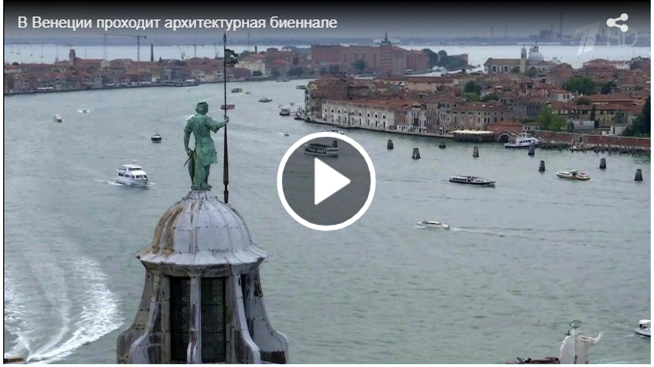
It’s like a world championship but only in architecture which is currently being held in Venice. Designers and artists from different countries have brought their achievements and the best developments to the Italian city.
At the 16th Venice Architecture Biennale, Russia presents an exhibition dedicated to the construction and operation of the railway. The opening of the exhibition "Station "Russia" in the Pavilion of Russia was held on May 23, 2018.
The project is related to the theme "Free Space" (FreeSpace) declared by the Biennale curators, which is of particular importance to Russia. Those places in Russia where railroads lay are inhabited. The railway has served and will continue to serve as an instrument for conquering the vast space Russia. The General Partner of the Pavilion this year is JSC "Russian Railways".
The pavilion of more than a hundred years ago has been built under the design of the architect Shchusev, the author of Kazansky Railway Terminal in Moscow. Nowadays, Railways and stations — places of encounters and goodbyes — have become the main theme of the Russian exposition. The past, present and future are close. Next to the Pavlovsk railway station which was the terminal station of the first railway of the Russian Empire, there is a modern railway station of Sochi which was built for the Olympics games, and the project of Russia's first high-speed rail line which should link Moscow and Kazan.

Design of Moscow-Kazan high-speed rail line by Nikolay Shumakov
"This is Kazan station. This is the main line of the railway, rails, sleepers, reflective shell and the main and most living part – the station building," the President of the Union of Architects of Russia Nikolai Shumakov said.
Stations are the same documents indicating time as temples or palaces. This is a storage room, and next to it, there are walls painted with graffiti. And this is only the beginning of the dialogue. Guests of the Russian pavilion think about a real journey by the roads of our country.
"I would like to see Moscow and St. Petersburg, and not only. The Eastern part of the country — Vladivostok, as well. I already know a lot about Russia, but so far only about the art history," said student Lara Gaeta.
Surprisingly, but the most interesting achievements of the modern architecture are exhibited here in Venice where the newest buildings are hardly under 200 years old.
The bridges over the canals and figurative bridges — through the time. The famous architects of the cities on the Adriatic preferred classicism and Baroque whereas modern architects prefer postmodernism and high-tech.
The British pavilion was deliberately left empty to let visitors take a fresh look at its architecture. In the Venetian Arsenal there is a multi-ton fragment of a five-story building for social housing marked for demolition which has been delivered there by a barge from London. The authors of the idea from the Victoria and Albert Museum believe that the style of brutalism of gloomy houses made of concrete and glass has a future.
The Swiss offer guests to feel like Lilliputians in the country of giants, and the French reflect on the revival of abandoned territories and buildings, the Germans — the wall that once divided Berlin.
The Swiss give guests an opportunity to feel like Lilliputians in the country of giants; the French reflect on the revival of abandoned territories and buildings; as for the Germans they present the wall that once divided Berlin.
This year, the Biennale involved the Vatican state for the first time. On the island of San Giorgio, near the monastery of the XVI century which is one of the most beautiful in Italy, architects from different countries on behalf of the Holy See has built 10 chapels of environmental materials – mostly wood – but there are also extravagant metal structures in which it is difficult to see the objects of religious worship.
The task was to fit perfectly the new temples into the Park of the ancient Abbey. This is how the world star Norman foster sees the Catholic chapel. After the closing of the exhibition, all these churches built by order of the Vatican, will be dismantled and reassembled in the Italian towns affected by the recent earthquakes.
A mixture of styles and eras can be seen on Venetian embankments. Marble lion at the old Palace which saw sailing vessels of the Doges and Casanova, sits side by side with a fictional animal from the future to the delight of tourists who are always in abundance during the Biennale.
By: Dmitry Kochetkov
Source: 1tv.ru

